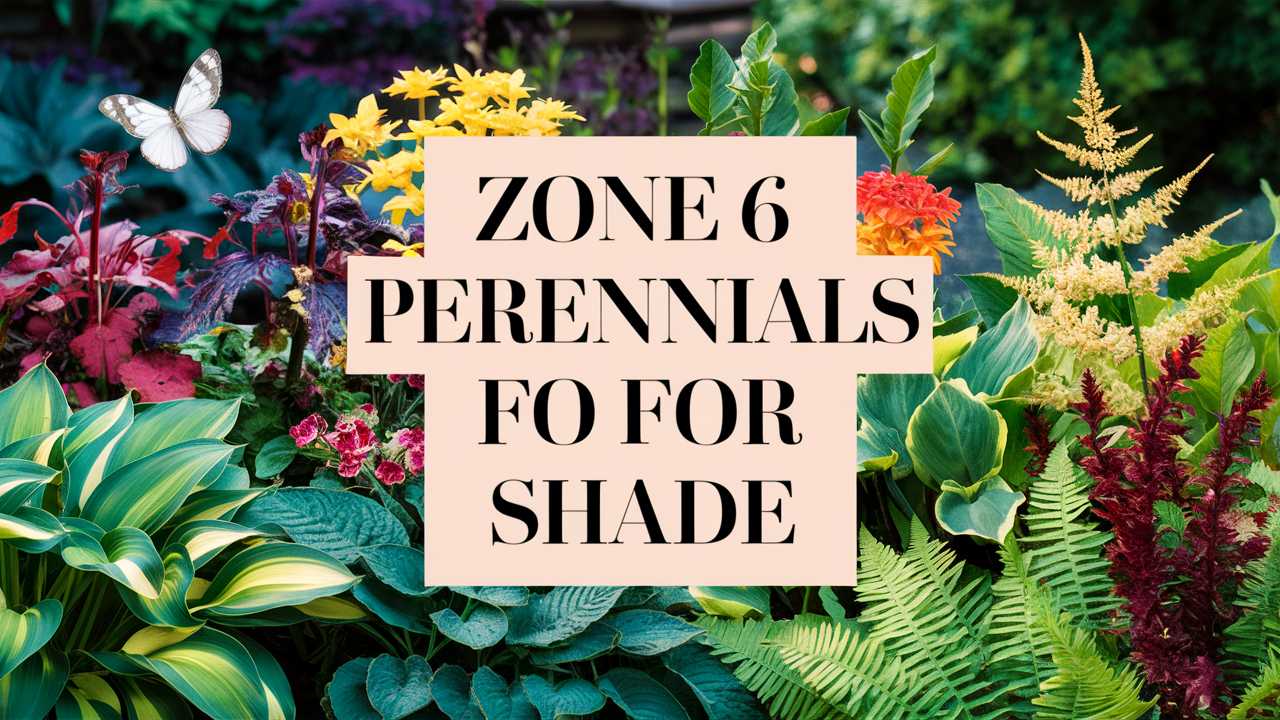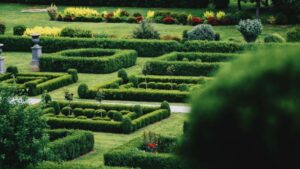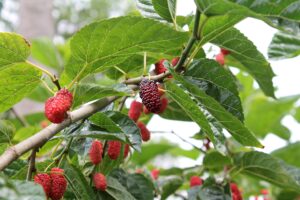This guide will dig into some exceptional Zone 6 perennials that not only survive but truly thrive in the shade.
Bleeding Heart
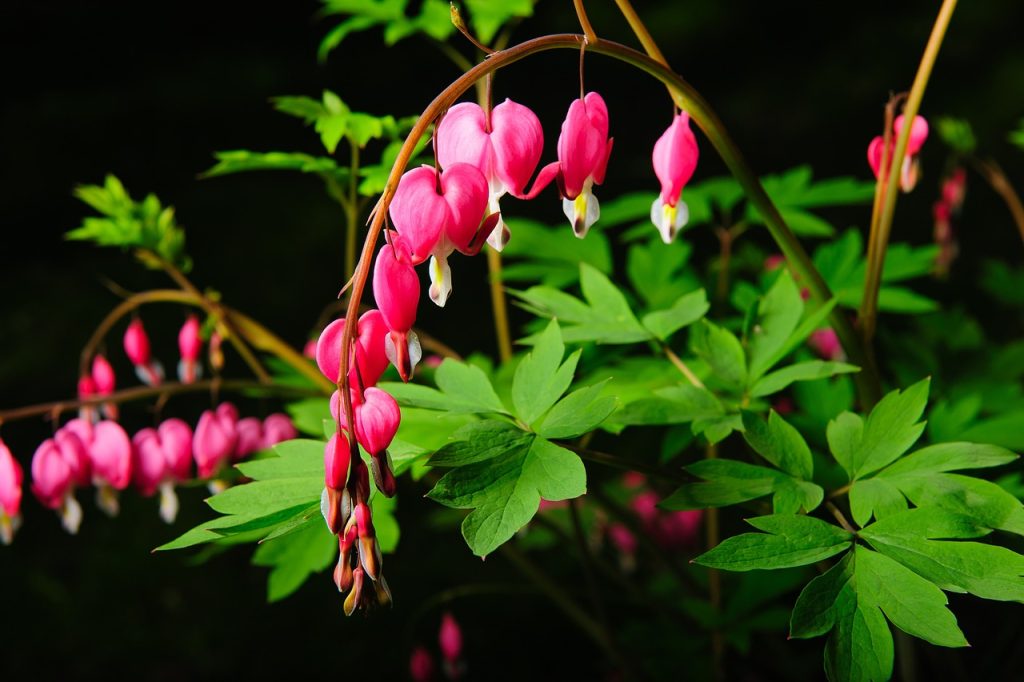
Bleeding Hearts (Dicentra spectabilis) are iconic perennials known for their heart-shaped pink and white flowers that dangle elegantly from arching stems. These plants typically bloom in early spring, offering a beautiful heartwarming display right when your garden needs it the most. Bleeding Hearts prefer partial to full shade and are ideal for woodland gardens or under the canopy of larger trees.
Beyond their stunning blooms, Bleeding Hearts require well-drained, rich soil and consistent moisture. They establish well and spread gradually, creating a lovely clump over the years. However, once the flowers fade, the foliage will yellow, and the plant may go dormant in the summer, so it’s essential to plant them alongside companions that can fill in the gaps.
Columbine
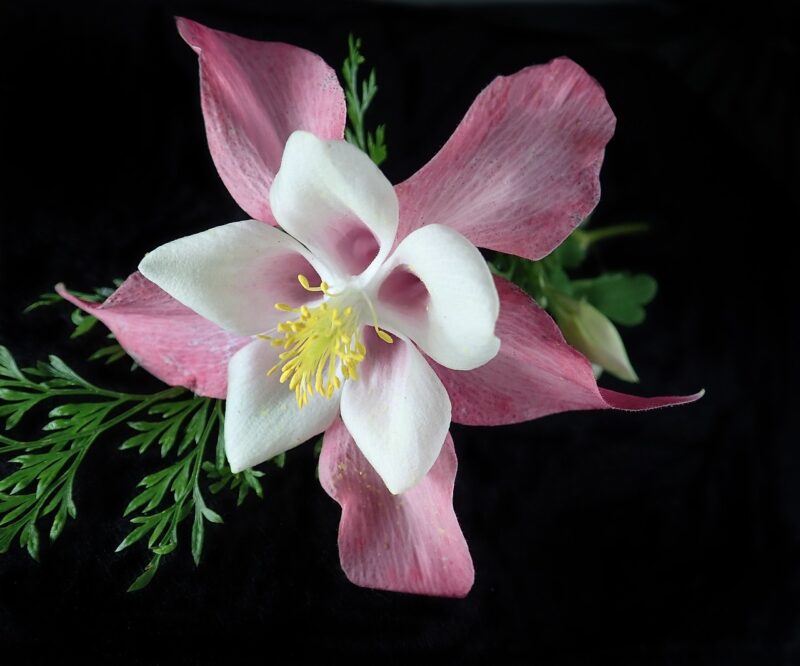
Columbine (Aquilegia spp.) is a delightful perennial that adds a whimsical touch to shaded areas with its unique, spurred flowers in various colors, including blue, yellow, and red. These plants are not just beautiful; they are also drought-tolerant and can adapt to different soil types, making them a versatile choice for gardeners in Zone 6.
Columbine blooms from late spring to early summer and attract pollinators like hummingbirds and bees. They thrive in dappled sunlight or partial shade, making them great for spots that receive morning sun. The airy foliage complements other shade-loving plants and, importantly, self-seeds readily, ensuring a continued presence in your garden year after year.
Coral Bells
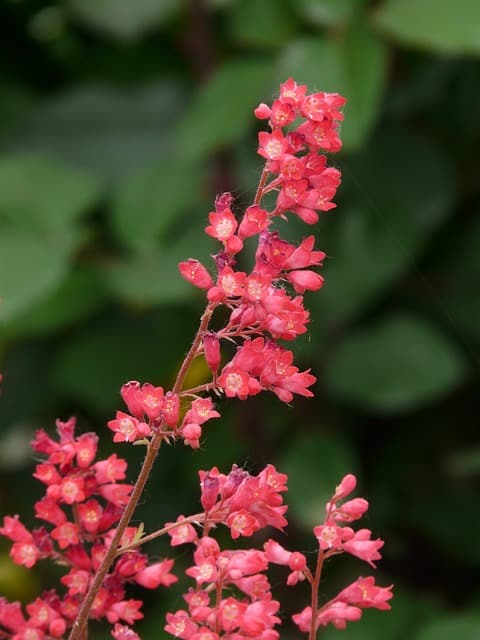
Coral Bells, or Heuchera, are prized for their striking foliage and charming bell-shaped flowers that rise above their leaves in late spring. Available in a diverse palette of colors, from deep purples and vibrant reds to bright greens and variegated patterns, Coral Bells add a splash of color in shady spots where flowering plants may struggle.
These perennials prefer well-drained soil and can tolerate varying light conditions, though they thrive best in partial shade. Coral Bells are also relatively low-maintenance, requiring minimal care aside from occasional watering. Their foliage not only lasts throughout the growing season but also serves as an attractive backdrop for more colorful blooms, enhancing the overall aesthetics of your shade garden.
Corydalis
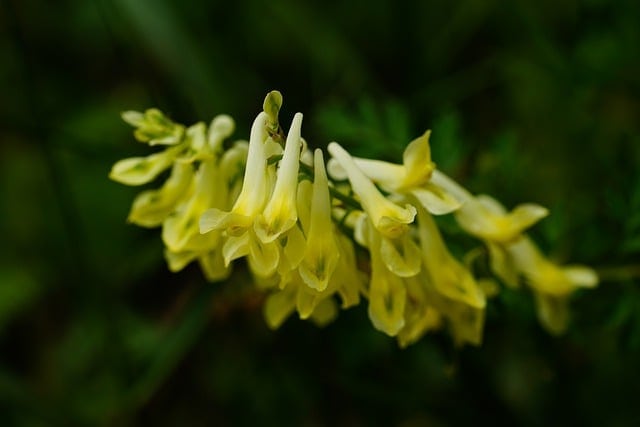
Corydalis, particularly Corydalis lutea, provides a unique flowering show in shade gardens. Its fern-like foliage is a lovely sight, but the real spectacle comes from the delicate, tubular yellow flowers that bloom from early spring into early summer. This perennial loves moist, well-drained soils and is often found thriving in the understory of woodlands.
What makes Corydalis even more engaging is its ability to naturalize in shade gardens, creating a flowing, delicate mat over time. It can easily spread through self-seeding, but its growth is mellower than some aggressive perennials, making it a perfect choice for adding color without overwhelming nearby plants. Plus, its tolerance for shade makes it a reliable option for those tricky under-tree plantings.
Creeping Myrtle
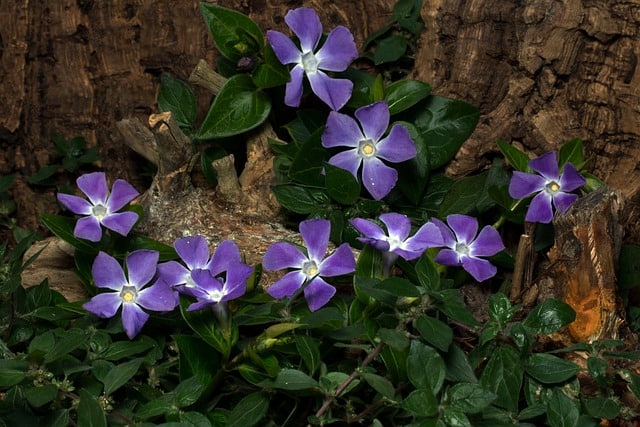
Creeping Myrtle, or Vinca minor, is often considered one of the unsung heroes of shady gardens. This ground cover is known for its glossy green leaves and enchanting purple flowers that bloom in early spring. Creeping Myrtle is exceptionally hardy and can thrive in almost any soil type, establishing a lush mat that suppresses weeds and holds soil in place.
Not only is Creeping Myrtle an excellent choice for filling in troublesome spots, but its sprawling habit makes it ideal for cascading over the edges of pathways or container gardens. With its ability to tolerate varying light conditions, it suits heavy shade areas well, making it a perfect partner for a variety of other perennials.
English Daisies
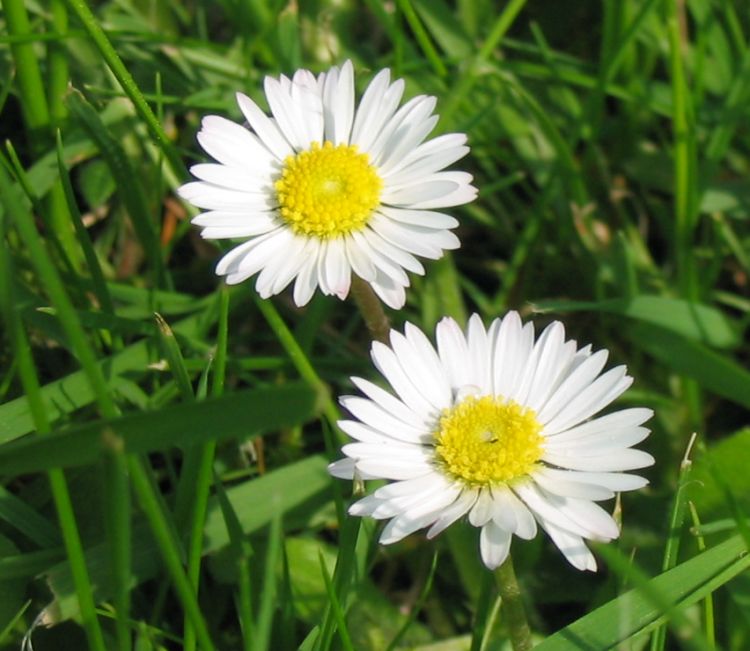
Bellis perennis, commonly known as English Daisies, may be small, but they pack a punch in terms of charm. These hardy perennials bloom from early spring and into summer, producing cheerful white and yellow flowers. While they typically prefer full sun, they can tolerate light shade, making them a suitable addition to the transitional areas in Zone 6 gardens.
Their neat rosettes of foliage create a refreshing carpet underneath taller shade plants, providing a picturesque lushness that enhances the atmosphere of any garden. English Daisies are also easy to maintain and can be deadheaded to encourage continual blooming through the season. Plus, they attract pollinators, enhancing biodiversity in your shaded areas.
Ferns
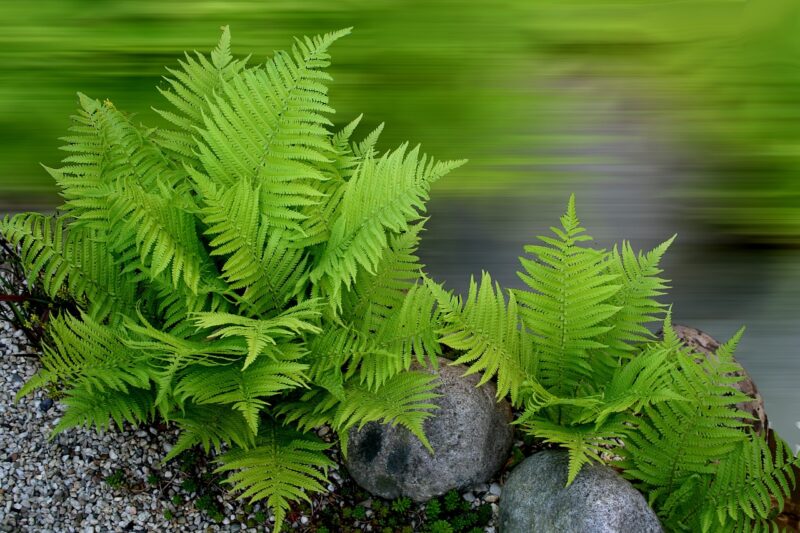
Ferns area classic choice for shady gardens, and they thrive beautifully in Zone 6. From the elegantly arching fronds of the Ostrich Fern to the intricate leaves of the Lady Fern, there’s a range of fern species that can suit various aesthetic preferences. Ferns bring a lush, textural element to shaded gardens, and their rich green hues provide a calming backdrop for brightly colored flowers.
These plants thrive in moist, shady environments and are known for their ability to tolerate neglect. Once established, many ferns require little maintenance, making them perfect for gardeners seeking a low-effort option. They can serve not only as a standalone feature but also as effective fillers around more showy flowering plants, offering a balance of texture and color throughout the gardening season.
Foam Flowers
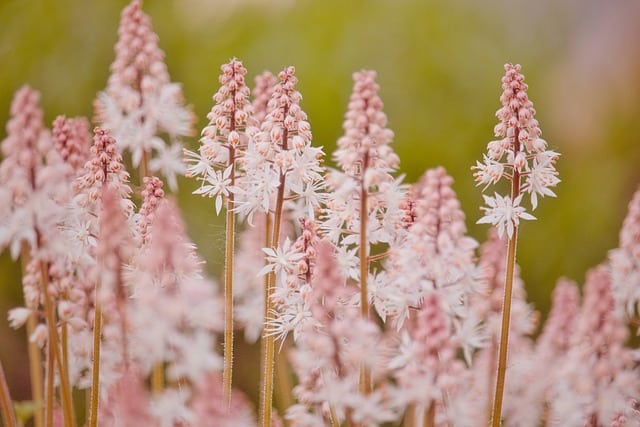
Foam Flowers, or Tiarella, are a delightful addition to any shade garden, showcasing intricate, frothy white or pink flowers on tall spikes during spring and early summer. Their deeply lobed foliage adds a splash of vibrant green to shady spots, making them visually striking even when not in bloom.
These perennials are particularly fond of moist, well-drained soils enriched with organic matter. Foam Flowers thrive in partial to full shade and can tolerate a range of growing conditions, from woodland settings to more cultivated landscapes. Their ability to spread steadily, creating charming colonies, makes them a wonderful choice for naturalizing in shady areas. Plus, they provide excellent ground cover that can help suppress weeds effectively.
Hosta
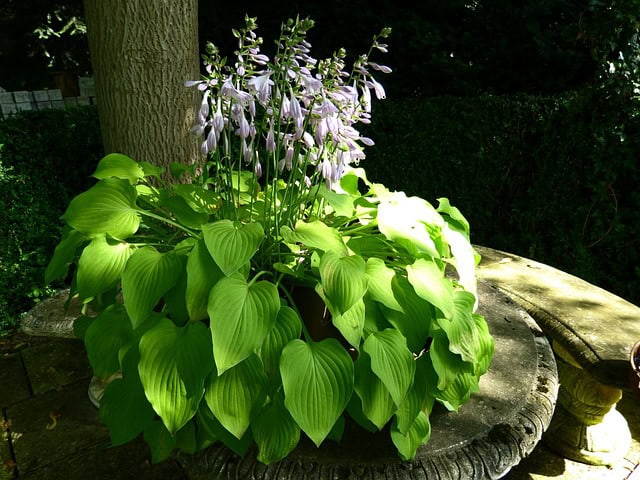
Hostas are among the most beloved shade-loving perennials, revered for their stunning foliage and elegant flowers. With countless varieties available, ranging from dwarf types to towering giants, Hostas can cater to any aesthetic, bringing various colors, shapes, and textures into your garden. Their leaves can be solid green, variegated, or even blue-tinged, making them incredibly versatile as garden focal points.
They thrive in rich, well-drained soils and prefer consistent moisture, making them perfect for planting under trees or in shaded beds. Hostas are incredibly resilient and can thrive even with a little neglect. Moreover, in the summer, they produce lovely flower spikes that attract hummingbirds, adding an additional layer of beauty to your shaded garden. Just be mindful of snails and slugs, as they can be inclined to munch on your Hostas!
Brunnera
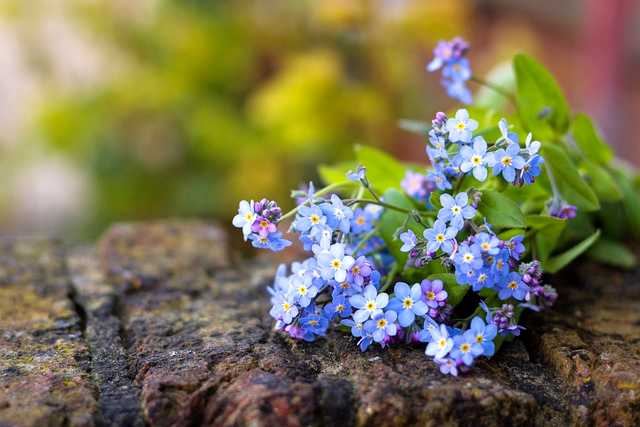
Brunnera, commonly known as False Forget-Me-Not, envelops your garden in a charming aura with its striking blue flowers in spring, resembling tiny forget-me-nots. The heart-shaped leaves of Brunnera, often spotted or variegated, provide an appealing texture that enhances the overall ambiance of a shaded garden.
These perennials thrive in moist, rich soils and prefer partial to full shade. Not only are they a stunning addition to the garden, but they also work well as a companion plant with other shade lovers, creating a cohesive design. Once established, Brunnera rewards you with its beauty year after year, naturalizing quietly and forming dense colonies that add depth to the scenery.
Japanese Spurge
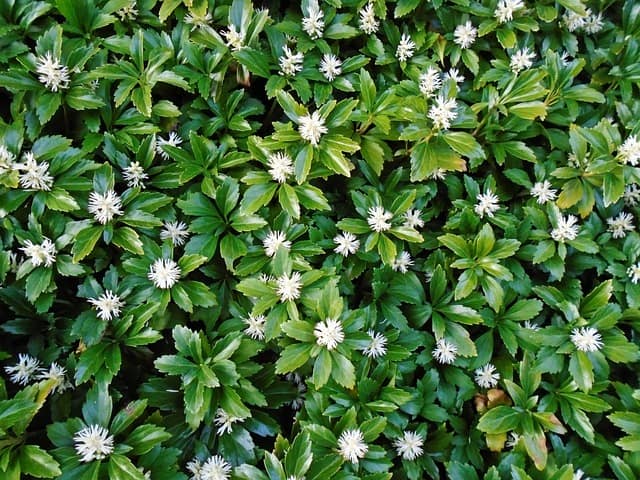
Japanese Spurge, or Pachysandra terminalis, is a fantastic evergreen groundcover that thrives in shady, moist areas. Not only does it provide greenery year-round, but it also boasts charming white flowers in spring that can give your garden a subtle, festive appearance. This spreading perennial is perfect for weaving between other plants or for covering unsightly bare patches in the shade.
Easy to care for, Japanese Spurge requires little maintenance and can adapt to a range of soils, thriving in even drought-prone areas once established. Its ability to persistently cover ground means less weeding for you, and its deep green leaves add a graceful contrast against the brighter colors of flowering perennials nearby.
Japanese Toad Lily
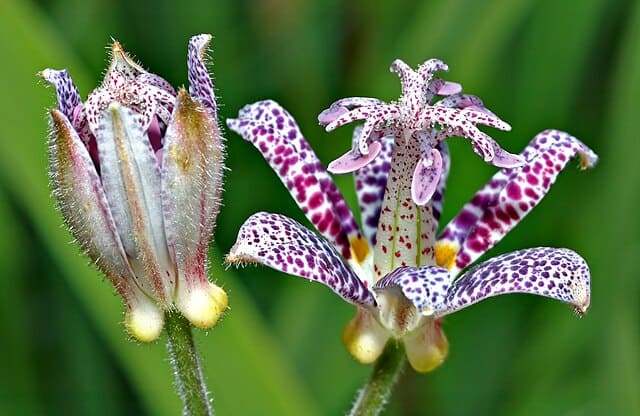
The Japanese Toad Lily, or Tricyrtis, is an exotic choice for shaded gardens, known for its unique, orchid-like flowers that appear in late summer and early fall. The small, intricate blooms boast speckled patterns that create a fascinating visual interest just when your garden might need a pop of color after a long season.
These perennials thrive in consistently moist, well-drained soil and prefer partial to full shade. Japanese Toad Lilies can create lovely clusters over time, filling your garden space with intrigue amidst a sea of green. Their late-season blooms also provide opportunities for attracting pollinators, ensuring your garden remains lively through the fall.
Lenten Rose
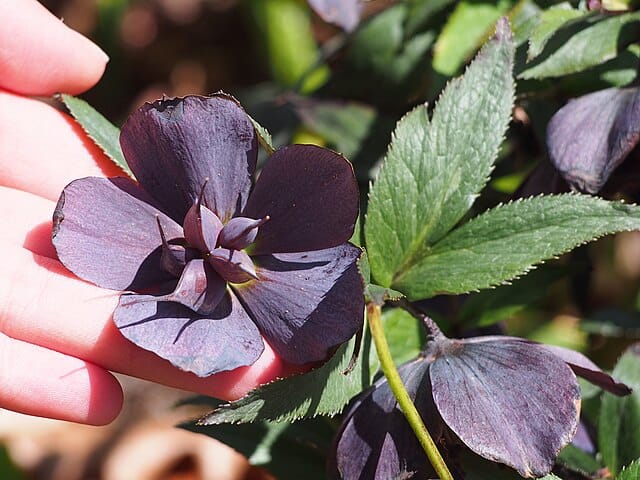
Lenten Rose, or Helleborus, brings an understated elegance to shaded gardens with its nodding, cup-shaped blooms that range from creamy white to deep burgundy. These perennials bloom in late winter or early spring, often even while snow is still on the ground, providing much-needed color in early garden displays.
Not only are Lenten Roses hardy and resilient, but they also thrive in rich, well-drained soils under partial to full shade conditions. These plants are deer resistant, making them an excellent choice for gardens that may be frequented by wildlife. Their dark green foliage remains attractive throughout the year, ensuring aesthetic appeal even when flowers are done blooming.
Leopard’s Bane
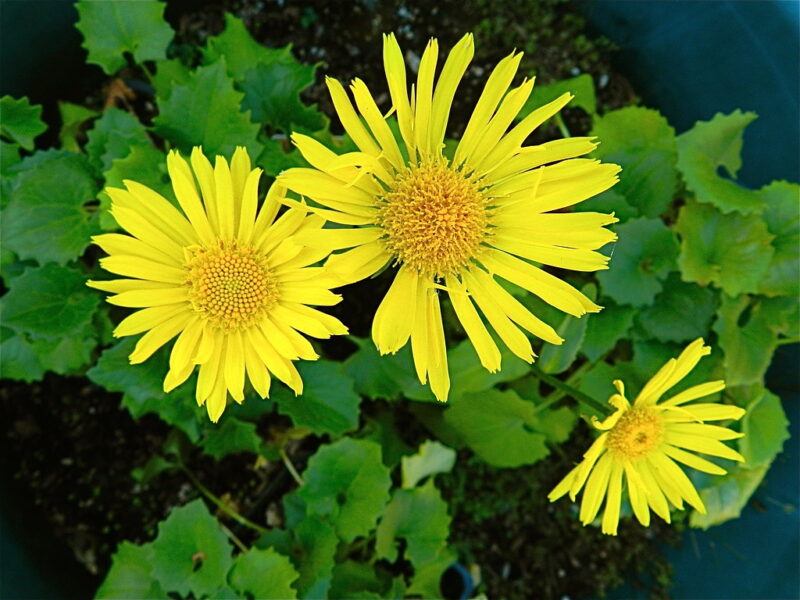
Leopard’s Bane, or Doronicum, stands out in shady gardens with its cheery, daisy-like yellow flowers that bloom in early to mid-spring. Known for its ability to thrive in full shade, this perennial adds a striking burst of color that can be a highlight of the early garden.
These perennials prefer moist, rich soil and can be somewhat tolerant of dry conditions once established. They are a delightful, low-maintenance option that produces flowers before many other shade-loving plants wake up. Their vibrant blooms contrast beautifully against lush green foliage of other perennials, ensuring a lively display in a typically subdued landscape.
Lungwort

Lungwort, or Pulmonaria, is celebrated for both its stunning foliage and early spring blooms. The patterned leaves, often speckled with silver, create a beautiful groundcover that thrives in shady, woodland conditions. Lungwort produces clusters of pink or blue flowers that transition as they mature, providing a multi-hued spectacle that delights in early spring.
These hardy perennials appreciate rich, moist soils and are perfect for filling in gaps in shady borders. They are also noted for their adaptability, thriving in a variety of conditions. Once established, Lungwort makes a beautiful companion plant, softening the edges of other shade-loving perennials and providing year-round interest in your garden.
Indian Pink
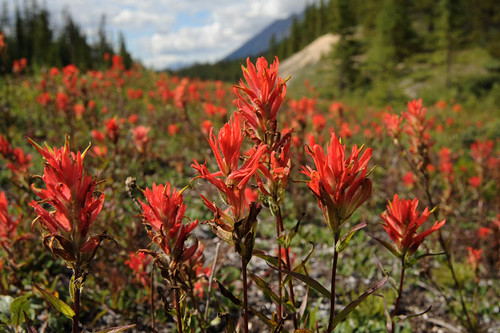
Spigelia marilandica, commonly known as Indian Pink, is a native perennial that thrives in shady spots and provides stunning tubular red flowers with yellow tips during late spring and summer. These flowers are especially appealing to butterflies and hummingbirds, making them a fantastic choice for attracting wildlife to your garden.
Indian Pink prefers well-drained, moist soil and can adapt to a range of light conditions, thriving particularly well in partial shade. This perennial forms clumps over time, providing a lush appearance without being overly aggressive. The contrast of its dark green leaves and vibrant blooms adds a stunning visual element to shady borders and woodland gardens.
Sun King Aralia
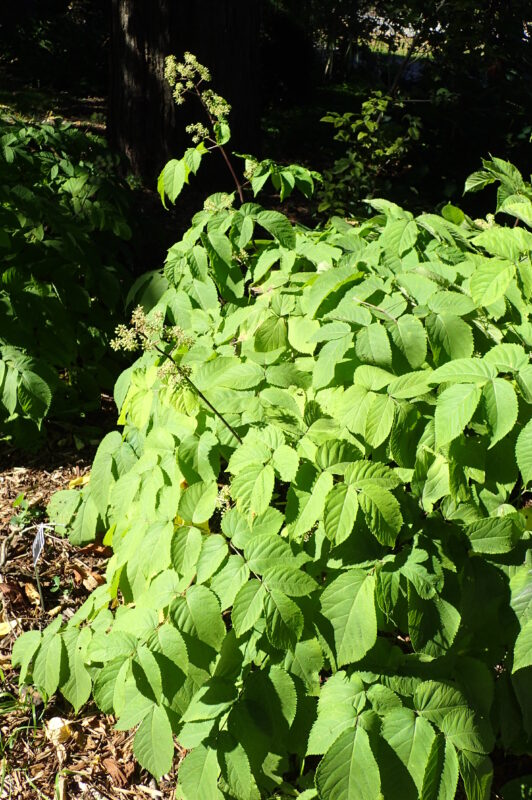
The Aralia species is a showstopper in shaded gardens, particularly the Sun King variety, which offers wonderful, bright golden foliage. This perennial thrives in partial to full shade and is an excellent choice for damp, rich soils, adding a stunning focal point to shadier parts of your garden.
Sun King Aralia’s unique leaf structure adds a dynamic quality to the mixed textures of your garden, while its foliage provides stability, brightening up darker areas. Its small clusters of white flowers appear mid-summer and can attract a variety of beneficial pollinators. With its robust growth habit and low maintenance needs, Sun King Aralia ensures that your garden remains visually interesting throughout the year.
Wind Flower
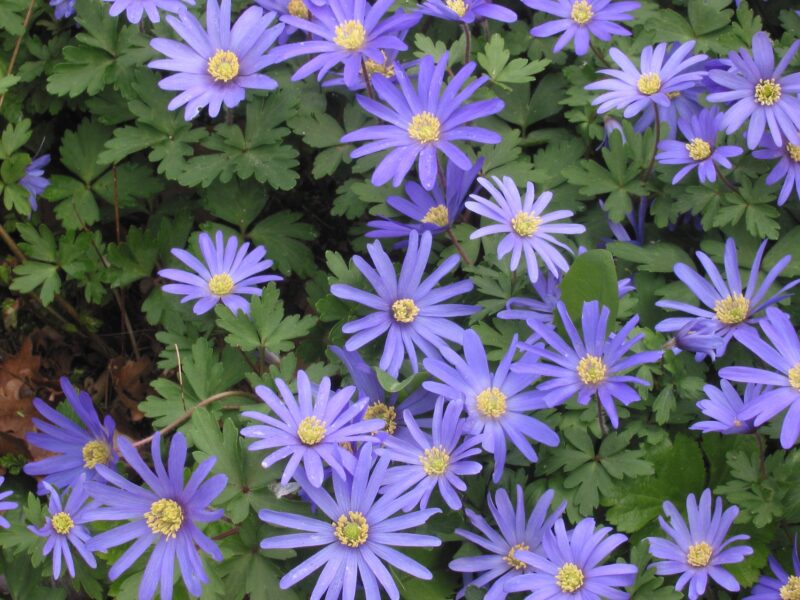
Wind Flower, also known as Anemone nemorosa, is a delicate, enchanting choice for shaded gardens, producing white or light purple blooms that sway gently in the breeze. These perennials typically emerge in spring and can quickly spread to create charming colonies, delighting in early garden displays.
Wind Flowers thrive in moist, well-drained soil under partial to full shade, making them perfect for woodland edges or under trees. They attract various beneficial insects and can fill empty spaces with beauty and grace. With their charming history rooted in folklore, these flowers evoke a sense of nostalgia and connection to nature, making them a lovely addition to any shade garden.


